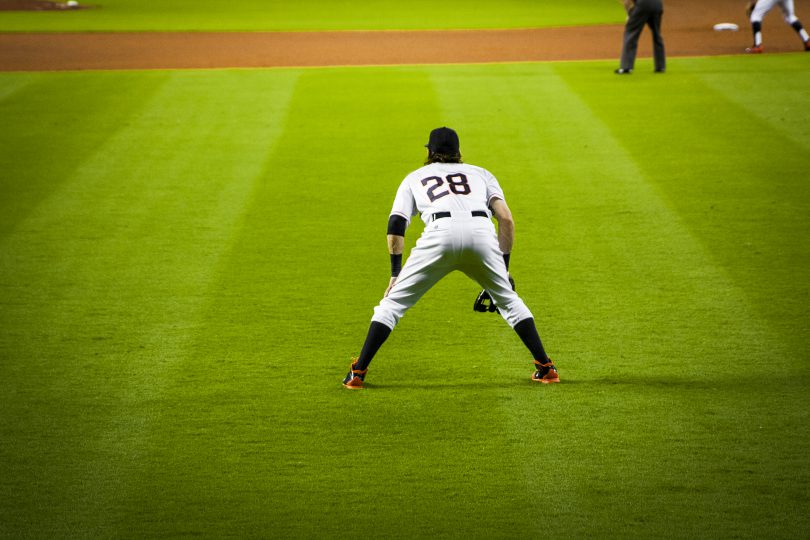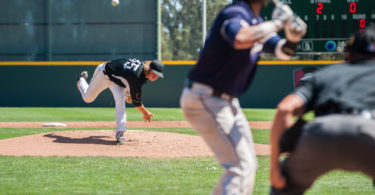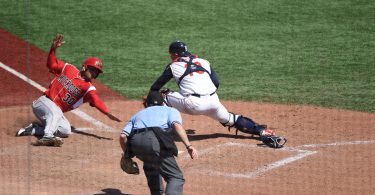The Situation: The wind is howling on a cold night at the start of the spring season. There’s a runner at 3rd with 1 out in the bottom of the 9th inning of a tie ball game. The 7-hitter is up to bat. With the winning run on 3rd, the outfielders have been drawn in so they have a chance to throw the runner out at the plate on a fly ball at them or in front of them.
The Play: After an unintentional walk to the 7th hitter and an uncontested stolen base, the coach for the visiting team decides that the best way to keep the game going is to intentionally walk the 8th hitter to set up a double play on the infield. The 9-hole hitter is not a prototypical bottom of the line-up hitter. Due to a substitution earlier in the game, the new 9-hole hitter is slow and a good candidate for a double play if the ball stays on the infield. After the successful intentional walk, the outfield remains drawn in, the middle infield is at double-play depth, and the corner infielders are playing a tad in (on a ground ball, the corners can decide whether their best shot at a double play is to come home or go to second). It’s a good right-on-right match-up.
The pitcher gets his sign, comes set, and delivers. The pitch is a curve ball that hangs up in the zone a little more than desired. The hitter’s eyes get big as he takes a swing. The batter pulls off the pitch slightly, but makes good contact, sending a fly ball slicing down the right field line. The right fielder takes a shallow drop step and takes off after the ball, angling back and towards the line. The ball is flirting with the line. The second baseman screams to let the ball go, but with the wind, the right fielder can’t hear him. The right fielder dives for the ball and makes the catch, right on the line.
The Outcome: It’s hard to tell whether the ball would have been fair or foul, but either way by the time the right fielder scrambles to his feet, the winning run will easily tag and score from 3rd base. It was a great catch, but it also means the game is over.
What Went Wrong?
The game seems to speed up in pressure situations. That’s why it’s critical to think the game in-between pitches and to have a plan before every pitch. There are few outfielders in the world who could make a diving catch angling away from home plate, get up, and make an accurate throw home in time to throw out a runner tagging from 3rd. So, before the ball is hit, the outfielder needs to think about all potential outcomes and have a mental plan in place for each. Unfortunately, the second baseman also communicated this reminder too late. If he communicates that to the right fielder before the at bat, the game may still be going.
This is a strange play that requires a lot of thought because instinctively, the right fielder did nothing wrong. He did as he has been coached—he took a good route to the ball and made a great diving catch. However, in this situation, despite the impressive catch, it’s not a heads-up play and the game ends as a result. While, if not caught, the ball may have fallen in fair territory, the only feasible way for the game to continue is if the right fielder lets it go and it’s called foul. If he catches it, the game is over. If he lets it go and it’s ruled fair, the game is over. If he lets it go and it’s foul, the game continues. Letting it go is the only viable option and that’s what the outfielder should have done.







